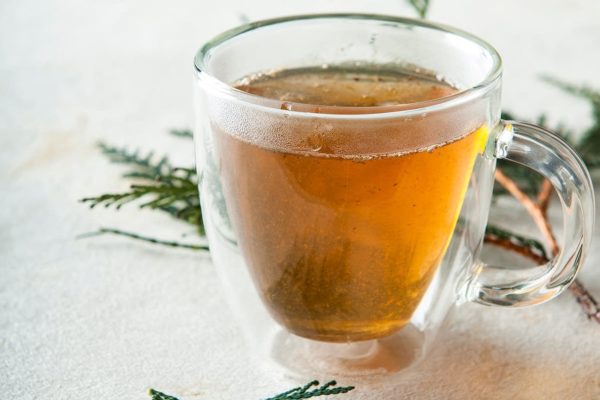Indigenous Fellowship of Hamilton Road

Cedar
Western Red Cedar (and to a lesser extent Yellow Cedar), which feature in ceremonies in the Pacific Northwest, belong to the Cypress family, whereas in the eastern provinces, members of the Juniper family, which have similar characteristics, are used for ceremonies.
As with sweetgrass, cedar is burned during prayers so the smoke will carry the prayers to the Creator. In some First Nations, cedar boughs and sage are mixed together and spread on the floors of sweat lodges. Cedar is also burned to drive out negative energies and usher in positive energies, and cedar boughs are waved to purify homes. Medicinally speaking, yellow cedar bark is known to contain an anti-inflammatory agent so was used as a wound dressing. Cedar also was used in cleansing baths which involve plunging into cold water and using bundles of cedar and other Cedar, along with tobacco, sage and sweet grass, is one of four sacred medicines recognized in many Indigenous communities for ceremony, healing, and wellness. These four medicines can be used in ceremony separately, or in any combination, especially if there is a certain goal to be achieved. In particular, cedar is used for healing, restoring balance and protection against disease. Not only does cedar have anti-inflammatory effects, improves respiratory organs and decontaminates the air, the aroma is comforting and calming.
There are many ways to reap the benefits of cedar; you can smudge with cedar, wear cedar in your shoes, make cedar tea, or simply boil cedar on your stove to release its properties.
Language
Sed in Michif
Giizhik in Ojibwe
onʌˀtakwʌ́htaˀ in Oneida
Benefits of Cedar
Cedar is a powerful antimicrobial. Reflect on where it lives – cool wet forests where fungi and molds thrive. When you scratch cedar leaves or cut the wood, strong essential oils are released. These oils are cedar’s medicine to repel insects, molds, fungi, bacteria, and viruses. Our ancestors discovered this long ago and used cedar’s medicine topically and internally to ward off external forces.
Cedar leaf is a useful anti-fungal for skin and nail fungus. The tincture, infused oil, or salve can be used topically and should be applied 2-3 times a day until a week after the fungus disappears. Fungal infections are pernicious and need to be treated aggressively. You can also soak your feet in cedar tea by steeping a cup of dried cedar leaves in about 10 cups of hot water. Let the tea steep until it is warm and then place it in a bowl or basin large enough for your feet. Soak your feet for 10-15 minutes – a nice activity when you are reading or watching television.
Cedar has antiviral properties that can help rid the body of warts. It can be applied directly on the wart in the form of an oil, salve, or tincture a couple of times a day for several weeks until the wart separates from healthy skin and falls off or disappears. Homeopathic cedar (Thuja) in ointment or tablet form can also be effective for treating warts.
Reference: Aboriginal sacred plants: Sage. Indigenous Corporate Training Inc. (n.d.). https://www.ictinc.ca/blog/aboriginal-sacred-plants-sage

Ceremonial: Smudging
When we smudge, we send our intentions through smoke to the spirit world. As part of our journey in this human experience, we continue to build new relationships while severing old ones. At times, we recognize the need to clear the space of unwanted spirits. We also recognize there are times to build relationships in life with our spirit, spirit helpers, and the spirit world.
Dried cedar is placed in a bowl, or other safe container, and ignited. The flame is then extinguished, allowing the cedar to smolder. The smoke that rises is then fanned using one’s hand or a feather. There is no right or wrong way to smudge, you can do what feels natural to you. Move the smoke from the top of your head, over your eyes, mouth, ears, hearts and bodies. Focus on the sensation of the smoke while centering your mind and calming your spirit.

Uses of Cedar
The astounding variety of objects that can be created from a single tree is a testament to a profound cultural interrelationship between humans and plants. The importance of cedar is reflected in tools and everyday objects, but also in ceremonial objects and regalia. This section will explain some common uses and well-known objects created from cedar. However, each culture has developed its own techniques and uses for cedar, and it is important to keep in mind that we provide only a general overview, and this section does not reflect all the complexities and variations that are found among different First Nations.
Starting with the base of the tree, cedar roots can be dried and braided to form cordage for hats and baskets. The Coast Salish used cedar root to create a unique type of coil basketry. With the right technique, a cedar basket can be made watertight and heatproof. As a result, cedar baskets are used as “pots and pans” for cooking and boiling water. Water is heated in baskets using hot rocks, and once it comes to a boil, foodstuffs can be added.
The withes of a cedar tree are strong, lightweight, and naturally grow in long strands, making them a suitable choice for ropes and lashing. The Kwakwaka’wakw of northern Vancouver Island made three-ply rope for whaling from young Red Cedar. Because of their strength, cedar withes are also used as lashing to make wood and stone weapons, as well as burden baskets for carrying heavy objects. As coastal First Nations did not traditionally use metal nails and bolts, withes were used to lash together roof planks and setting baseboards, a vital part of house construction.
The most versatile part of the cedar is the bark. Bark could be dyed and processed into different types of thread for mats, clothing, blankets, and hats. Kwakwaka’wakw warriors wore protective armor made from bark rope during battle. Like roots and withes, bark is also made into ropes, baskets, and fishing nets. The inner bark of the Yellow Cedar was valued for its softness and absorbability, so women used them for baby diapers and bedding, sanitary napkins, and towels. Expecting mothers gave birth in a pit lined with Yellow Cedar bark to receive the infant. Furthermore, dried bark burned slowly, providing excellent tinder for matches and torches.
Cedar wood is strong, lightweight, and straight-grained, so it is easy to split and carve, and made into totem poles, masks, and longhouses. Coastal First Nations, who depended on fish as the main staple of their diet, developed a wide array of fishing gear from cedar, including canoes, paddles, hooks, spears, and fishing floats. Once caught, fish were preserved in cedar smokehouses or dried on cedar racks. Food can be stored or served in bentwood boxes, which are made from a single cedar plank bent using steam to form four sides. Bentwood boxes, especially those decorated with paint or carvings, were once a valuable trade item along the Northwest Coast. Bentwood boxes could be used to hold all sorts of goods, and they also served as burial boxes for the deceased.
Longhouses formed the central dwelling unit of each village, with large extended families living together under the same roof. Cedar poles formed the foundations of the house, followed by a framework of fluted beams overlaid with cedar roof planks. Carved house frontal poles would occasionally be positioned at the entrance, particularly amongst the Haida and Tlingit. These poles typically depict the crests and lineage of a family, as well as the hereditary rights and ancestors of the owners. Many First Nations decorated house posts, mortuary poles, and memorial poles with intricate carvings of stylized human figures and animals.
In addition to everyday use, cedar is used for a variety of ceremonial purposes. Families often commissioned a carver to create cedar figures for a potlatch, usually as a welcoming gesture to the guests. Ceremonial dancers’ regalia might include head rings, neck rings, wristlets braided from cedar, as well as cedar masks.
Reference: Cedar. indigenousfoundations. (n.d.). https://indigenousfoundations.arts.ubc.ca/cedar
Cedar and Spirituality
Given the importance of cedar in everyday life, it is clear that cedar also plays an integral role in the spiritual beliefs of coastal First Nations. These beliefs recognize that the cedar tree has its own life and spirit. Coast Salish and Tlingit shamans often had cedar “spirit assistants” or “guard figures” to protect them.
Cedar was also widely valued for its healing abilities. Yellow Cedar bark, which has anti-inflammatory properties, was frequently applied as a dressing for wounds, as a tourniquet, or to ward off evil. Many beliefs and taboos are also associated with the cedar tree. For example, a person who killed a tree through improper harvesting would be cursed by other cedar trees. Similarly, some believe a pregnant woman should not braid baskets, lest the umbilical cord would twist around the baby’s neck. As the cedar is a long-lived tree, some Coast Salish groups ensured a long life for their infants by placing the afterbirth in the stump of a large cedar.
As a plant that has ensured the survival of people for thousands of years, cedar has become a powerful symbol of strength and revitalization. The deep respect for cedar is a rich tradition that spans thousands of years and continues to be culturally, spiritually, and economically important.


Cedar Tea
Directions
- Harvest fresh green leaves, only gathering as much as you need.
- Remove any seeds or brown pieces.
- Rinse cedar to remove dirt particles.
- Allow time to dry, at least four days.
- Crush leaves using a mortar and pestle.
- Boil water in a pot or kettle.
- Pour hot water into tea pot and add crushed cedar leaves.
- Allow time for the leaves to soak until the water becomes golden brown.
- Strain off the cedar leaves and skim the tea to remove the scum layer.
Warning: Cedar contains Thujone, which can be toxic to the human body. It is recommended that a person drink no more than three cups of cedar tea per week. It should not be used during pregnancy, breastfeeding or with kidney weakness.
Benefits: High is Vitamin C. The body requires vitamin C to efficiently use carbohydrates, fats, and protein. It binds and neutralizes the tissue-damaging effects of free radicals. It is an essential co-factor for the formation of collagen, the body’s major building protein, and is essential to the proper functioning of all internal organs.
Reference: Healing with cedar at home. Indigenous Education. (n.d.). https://www.rrc.ca/indigenous/2020/03/25/healing-with-cedar-at-home